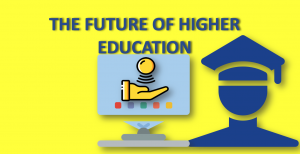The Future of Higher Education: Reports and Resources
Labs test artificial intelligence, virtual reality and other innovations that could improve learning and lower costs for Generation Z and beyond.
2025: A Look Into the Future of Higher Education
The Wiley Faculty Fellows, a group of distinguished instructors from Wiley’s partner institution network, recently looked at current trends to predict how the experiences, expectations, and needs of students and faculty may change, and how institutions and programs might evolve as a result.
4 Worries About Higher Education in the 2020s
If you read our book, Learning Innovation and the Future of Higher Education, you will discover that we see much to celebrate. The main argument of the book is that higher education is in the midst of an underrecognized and underappreciated renaissance in teaching and learning.
15 Higher Education Trends for 2020: Latest Forecasts To Watch Out For
There’s no mistake; the higher education sector is facing a lot of challenges. These problems range from the declining number of overall student enrollment to a decrease in state funding. Looking at the bright side, though, these difficulties allow new strategies and methods to be developed by the sector. Are you up to speed with the trends in higher education?
The Future of Higher Education: Will Higher Education Seize the Future or Fall Victim to It?
n every boardroom, cabinet meeting, professional conference, news outlet, and whitepaper, the most talked about theme in higher education is the avalanche of impending changes confronting our institutions. We have new populations of students who both learn differently and are less prepared for higher education. New technologies boast tremendous opportunity to increase student success and yet threaten the very model of higher education itself.
Report on the Future of Higher Education
Given the changing landscape of higher education, the Oklahoma State Regents for Higher Education (OSRHE) established the Task Force on the Future of Higher Education in March 2017 to conduct a systematic review of higher education; examine existing initiatives and best practices; and report findings and recommendations on strategies that best support improving quality, access, affordability, and efficiency in the Oklahoma state system of higher education. The Task Force was comprised of a broad and diverse group of stakeholders from across the state, including State Regents, private citizens, representatives from Oklahoma’s public colleges and universities, and the designees of Governor Mary Fallin, Speaker of the Oklahoma House of Representatives Charles McCall, and Oklahoma State Senate President Pro Tempore Mike Schulz. Citizen members of the Task Force were well-respected Oklahomans who come from a variety of professional and educational backgrounds and represented different geographic regions within the state.
Oklahoma State Regents for Higher Education, via ERIC
Rethinking Higher Eduction
The United States can stand proud of its accomplishment in significantly expanding the number and diversity of students who have sought and earned a college credential as a result of the Servicemen’s Readjustment Act of 1944 (the G.I. Bill) and the Higher Education Act of 1965. Although educational elites expressed fears that the G.I. Bill would turn college campuses into “educational hobo jungles,”1 more than a million World War II veterans received education benefits provided through the G.I. Bill, and many credit this expansion of postsecondary opportunity with creating the burgeoning middle class and prosperity of the post-World War II era. The Higher Education Act further expanded the diversity of students who could participate in postsecondary education by providing financial support to students who would otherwise not have had such an opportunity.








